Fashion
Let Them Tattoo: A Journey Through Art, Culture, and Self-Expression
Published
8 months agoon
By
ahmad khan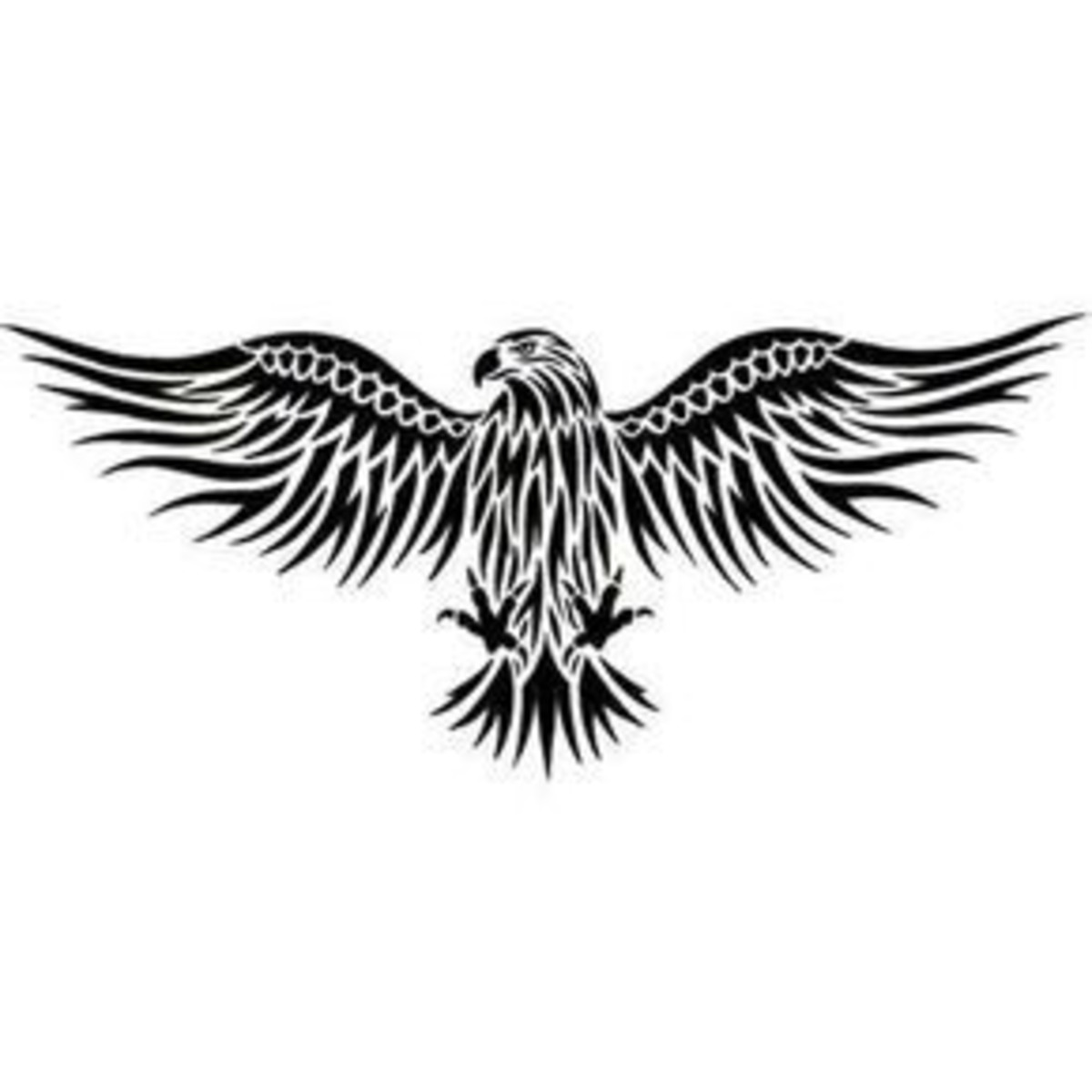
Let Them Tattoo have exploded in popularity in recent years, transforming from a niche subculture to a mainstream phenomenon. But why do tattoos hold such a significant place in modern society? Let’s dive into the world of tattoos, exploring their history, significance, and the many reasons why people choose to adorn their bodies with ink.Let Them Tattoo
A Brief History of Let Them Tattoo
Tattoos are not a modern invention. Archaeological findings suggest that tattooing dates back to ancient civilizations. The oldest known tattoos were found on a mummy dating back to 3370 BC. These early tattoos were likely used for various purposes, including religious rituals, healing practices, and social status indicators.Let Them Tattoo
Cultural Significance Through the Ages
Throughout history, different cultures have embraced tattooing for various reasons. In Polynesia, tattoos were a rite of passage and a mark of social status. In Japan, intricate tattoos known as irezumi were associated with spirituality and protection. Meanwhile, in the Western world, tattoos were often seen on sailors and soldiers, symbolizing their travels and experiences.Let Them Tattoo
The Modern Tattoo Movement
The tattoo industry has seen tremendous growth, with tattoo parlors popping up in nearly every city. This rise can be attributed to changing social attitudes and the increasing acceptance of tattoos as a form of personal expression. What was once considered taboo is now celebrated as an art form.Let Them Tattoo
Celebrities and Tattoos
Celebrities have played a significant role in popularizing tattoos. From rock stars to movie icons, many public figures proudly display their ink, influencing fans and followers to do the same. This visibility has helped destigmatize tattoos and promote them as a legitimate form of self-expression.Let Them Tattoo
Why People Get Tattoos
One of the primary reasons people get tattoos is to express themselves. Tattoos can be deeply personal, reflecting an individual’s beliefs, experiences, and passions. Whether it’s a favorite quote, a meaningful symbol, or a unique design, tattoos allow people to wear their stories on their skin.Let Them Tattoo
Commemorating Life Events
Tattoos are often used to commemorate significant life events. Birthdays, anniversaries, and memorials for loved ones are common themes. These tattoos serve as permanent reminders of important moments and relationships.Let Them Tattoo
Aesthetic Appeal
Let’s not forget the aesthetic appeal. Many people choose tattoos simply because they love the way they look. With countless styles and designs to choose from, there’s something for everyone, making it easy to find a tattoo that complements one’s personal style.Let Them Tattoo
Artistic Techniques and Styles
Tattooing is undeniably an art form, and like any art, it comes with a variety of styles and techniques. From traditional American tattoos to intricate Japanese designs, the possibilities are endless. Watercolor, blackwork, realism, and geometric patterns are just a few of the styles that artists and clients can explore.Let Them Tattoo
The Role of the Tattoo Artist
A tattoo artist is more than just someone who applies ink to skin. They are skilled professionals who bring their artistic vision to life. Good tattoo artists work closely with clients to design tattoos that are both meaningful and aesthetically pleasing, ensuring that each piece is unique.Let Them Tattoo
Health Risks and Safety Measures
One common myth is that tattoos are inherently unsafe. However, when done by a professional in a clean environment, tattoos are safe. Modern tattoo parlors adhere to strict hygiene standards, using sterile needles and equipment to prevent infections and complications.Let Them Tattoo
Professionalism and Perception
Another myth is that tattoos are unprofessional. While some workplaces still have strict policies against visible tattoos, attitudes are changing. More companies are recognizing that tattoos do not impact an employee’s skills or professionalism.Let Them Tattoo
Choosing the Right Tattoo
Choosing the right tattoo starts with finding inspiration. This could come from personal experiences, favorite artworks, or cultural symbols. Many people spend months or even years deciding on a design that resonates with them.Let Them Tattoo
Researching Tattoo Artists
Once you have an idea, it’s crucial to research tattoo artists. Look for artists whose style aligns with your vision, and check out their portfolios. Reading reviews and seeking recommendations can also help you find a reputable artist.Let Them Tattoo
Designing Your Tattoo
Work with your chosen artist to design your tattoo. They can help refine your ideas and ensure that the final design is both meaningful and visually appealing. Remember, a tattoo is a lifelong commitment, so take your time to get it right.
What to Expect During Your Appointment
Your tattoo appointment will typically start with a consultation to finalize the design. The artist will then prepare the area and apply the stencil. The actual tattooing process can take anywhere from a few minutes to several hours, depending on the size and complexity of the design.Let Them Tattoo
Pain Management Tips
Tattoos can be painful, but there are ways to manage the discomfort. Stay hydrated, eat a good meal beforehand, and try to relax. Some people find that listening to music or chatting with the artist can help distract from the pain.Let Them Tattoo
Aftercare Instructions
Proper aftercare is crucial for a tattoo to heal well. Follow your artist’s instructions, which usually include keeping the tattoo clean, avoiding direct sunlight, and applying a recommended ointment. This will help prevent infections and ensure your tattoo looks great for years to come.Let Them Tattoo
Tattoo Removal and Cover-Ups
If you ever regret a tattoo, removal options are available. Laser removal is the most common method, though it can be expensive and time-consuming. Other options include surgical removal and dermabrasion, though these are less common.
Cover-Up Techniques
Cover-ups are a great alternative to removal. A skilled artist can design a new tattoo that incorporates or hides the old one, giving you a fresh start without the need for removal.
The Impact of Tattoos on Personal Identity
For many, tattoos are a powerful form of self-expression and empowerment. They allow individuals to take ownership of their bodies and tell their stories in a unique and permanent way.
Tattoos as a Statement
Tattoos can also be a form of social or political statement. They can reflect beliefs, support causes, or challenge societal norms, making them a potent tool for activism and awareness.
Legal and Ethical Considerations
In most places, you must be at least 18 years old to get a tattoo. This legal restriction ensures that individuals are mature enough to make an informed decision. Parental consent may be required for minors in some regions.
Cultural Appropriation
When choosing a tattoo design, it’s essential to consider cultural appropriation. Some symbols and styles have deep cultural significance, and using them without understanding or respecting their meaning can be offensive.
Changing Attitudes Toward Visible Tattoos
Workplace attitudes toward tattoos are evolving. More companies are embracing diversity and self-expression, allowing employees to display their tattoos openly. However, it’s still important to consider your industry and company culture when getting a visible tattoo.
Navigating Professional Environments
If you work in a conservative environment, you might need to cover your tattoos. Long sleeves, high collars, and strategically placed tattoos can help you navigate professional settings without compromising your personal style.Technological Advancements
The tattoo industry is constantly evolving, with new technologies enhancing both the artistry and the tattooing process. Innovations such as 3D tattooing allow for designs that appear to have depth and texture, creating a more dynamic visual effect. Augmented reality tattoos are also emerging, where tattoos can interact with digital devices to produce animated effects or additional information. These advancements are expanding the possibilities for tattoo artists and clients alike, pushing the boundaries of traditional tattooing.
Emerging Styles and Innovations
As tattoo culture grows, new styles and trends are continually emerging. Minimalist designs with clean lines and subtle colors are gaining popularity, while intricate geometric patterns and dot work are also becoming more mainstream. The fusion of traditional and modern styles creates unique, custom designs that appeal to a wide range of preferences. Additionally, the exploration of new ink formulations and techniques continues to drive innovation in the industry.
Personal Stories and Experiences
Many people have personal stories behind their tattoos, making each piece of art unique and significant. From overcoming personal struggles to celebrating triumphs, tattoos often represent more than just a design—they symbolize a chapter in a person’s life. Sharing these stories can inspire others and deepen the appreciation for the art form.
Lessons Learned
Getting a tattoo can be a profound learning experience. It teaches individuals about commitment, personal expression, and the importance of thorough research. Many people reflect on their tattoos over time, gaining new insights into their own lives and values. These reflections can lead to new designs or modifications, further personalizing the tattoo journey.
Conclusion
Tattoos are much more than just body art; they are a form of self-expression, a reflection of personal stories, and a testament to the evolving nature of art. From their ancient origins to their modern-day significance, tattoos continue to captivate and inspire. As society grows more accepting and creative, tattoos will undoubtedly remain a powerful medium for personal and artistic expression. Whether you’re considering your first tattoo or adding to an existing collection, remember that your choices are a reflection of who you are and what you value.
FAQs
1. Are tattoos safe? Yes, tattoos are generally safe when performed by a professional in a clean and sterile environment. It’s important to follow proper aftercare instructions to ensure a healthy healing process.
2. How do I choose a tattoo artist? Research artists by looking at their portfolios, reading reviews, and seeking recommendations. Choose an artist whose style aligns with your vision and who maintains high hygiene standards.
3. What should I do before getting a tattoo? Before getting a tattoo, make sure you are well-hydrated and have eaten a good meal. Avoid alcohol and certain medications that can increase bleeding. Discuss your design and any concerns with your tattoo artist.
4. How can I take care of my new tattoo? Follow your tattoo artist’s aftercare instructions, which typically include keeping the tattoo clean, avoiding direct sunlight, and applying a recommended ointment. Avoid picking at scabs or scratching the tattoo.
5. Can I remove or cover up a tattoo if I regret it? Yes, there are methods for tattoo removal, such as laser treatments, and techniques for covering up unwanted tattoos. Consult with a professional to explore the best options for your situation.
You may like
Fashion
A Journey Through Fashion: Fall/Winter 2017 to Spring/Summer 2021: fw2017-ss2021
Published
6 months agoon
September 17, 2024By
ahmad khan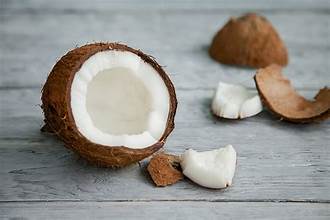
fw2017-ss2021 Fashion reflects the cultural, economic and social pulse of society. The years between Autumn/Winter 2017 and Spring/Summer 2021 have been particularly transformative for the fashion world. The fashion industry has undergone significant change, influenced by technological advancements, sustainability initiatives and the challenges posed by the COVID-19 pandemic. fw2017-ss2021
This period was marked by experimental design, growing environmental awareness and a redefinition of luxury fashion. Let’s take a closer look at the major trends, designer highlights and movements that shaped the fashion industry over these past four years. fw2017-ss2021
- Fashion as Political and Cultural Commentary (Autumn/Winter 2017)
The Autumn/Winter 2017 collections saw designers increasingly using their platforms to make political and cultural statements. This reflected the global climate at the time, where tensions were running high around various social issues. fw2017-ss2021
A key example: Dior’s feminist approach Dior’s Maria Grazia Chiuri had her models walk down the runway in T-shirts emblazoned with the slogan “We Should All Be Feminists.” This initiative not only strengthened Chiuri’s commitment to gender equality, but also paved the way for the fashion industry to become more vocal on social issues. From that point on, feminism, inclusion, and diversity became fw2017-ss2021 fundamental themes in fashion, with more and more designers pushing these narratives in their collections.
Diversity on the Catwalk Autumn/Winter 2017 was also a season that stood out for diversity in models. More brands, especially in New York and London fw2017-ss2021 , began to make efforts to feature models of different ethnicities, body types, and genders. The fashion world, which has historically been criticized for its lack of diversity, began to address the issue more seriously, laying the groundwork for a commitment to greater inclusion in upcoming seasons.
- The Rise of Maximalism and Streetwear (SS2018)
Spring/Summer 2018 saw a notable shift towards maximalism and the growing influence of streetwear. After years in which minimalism and normcore dominated the scene, maximalism returned with a vengeance. Designers embraced vibrant colors, exaggerated silhouettes, and intricate embellishments, providing a stark contrast to the understated looks of past seasons. fw2017-ss2021
Streetwear Influence Streetwear continued to dominate the fashion conversation, with luxury brands like Louis Vuitton and Balenciaga embracing a street-inspired aesthetic. In 2017, the monumental Louis Vuitton x Supreme collaboration marked the formal fusion of haute couture and streetwear. Streetwear designers like Off-White’s Virgil Abloh have become renowned for brands that blend luxury with an urban aesthetic. His appointment as artistic director of Louis Vuitton’s menswear division in 2018 further demonstrated the cultural shift toward casual, street-inspired fashion.
- Sustainability Takes Center Stage (Autumn/Winter 2018)
With environmental concerns gaining global attention, the fw2017-ss2021 arrival of Autumn/Winter 2018 saw sustainability become a major focus in the fashion world, with more designers and brands prioritizing eco-friendly materials, ethical production practices, and reduced waste.
Key Example: Stella McCartney Stella McCartney, a pioneer of sustainable luxury fashion, continued to lead the way in Autumn/Winter 2018, pushing for the use of vegan leather and sustainable fabrics. McCartney’s strong commitment to the environment helped to bring the conversation around sustainability into the mainstream. She advocated for transparency in the fashion supply chain, encouraging consumers and fellow designers to be more conscious about their choices.
Circular Fashion Movement
The circular fashion movement, which focuses on fw2017-ss2021 extending the life cycle of clothing through repair, resale, and recycling, also began to grow during this time. Brands such as Patagonia and Eileen Fisher introduced programs where customers could return used products in exchange for credits, which would then be repaired or recycled.
The emphasis on sustainability during the Fall/Winter 2018 season marked a significant turning point in how the fashion industry approached environmental responsibility. This change laid the groundwork for even more sustainable efforts in the following season fw2017-ss2021 .
- The Impact of Digital Fashion and Technology (Spring/Summer 2019)
Digital fashion and technology took center stage in the industry during Spring/Summer 2019. Fashion Week began
Digital Fashion Shows and Virtual Catwalks The traditional fashion calendar was further disrupted as designers explored alternative formats to showcase their collections. Some companies, like Tommy Hilfiger and Burberry, adopted a “see-now-buy” model where customers could purchase pieces directly after the show. Others, like Balenciaga, experimented with virtual reality and 3D elements in their runway experiences.fw2017-ss2021
This period also saw the rise of influencer marketing
. Fashion brands, recognizing their powerful influence, shifted their focus from traditional celebrities to social media influencers. Influencers like Chiara Ferragni and Aimee Song became key figures in shaping consumer preferences as well as purchasing decisions.
- Changes due to the pandemic (OI2020-SS2021)
Arguably, the most dramatic change in the world of fashion came with the outbreak of the COVID-19 pandemic in 2020. The pandemic transformed nearly every industry, but fashion, especially with its reliance on physical shows and retail, faced unique challenges.
Loungewear and comfort take over As lockdowns were implemented around the world, consumers turned to comfort. Loungewear, sportswear, and casualwear replaced formalwear and luxury shopping. Brands like Lululemon and fw2017-ss2021 Nike saw a surge in demand as people prioritized comfort and well-being. Designers also responded by incorporating softer fabrics, relaxed cuts, and utilitarian silhouettes into their Fall/Winter 2020 and Spring/Summer 2021 collections.
The rise of digital fashion
weeks Traditional shows became impractical due to travel restrictions and social distancing requirements. In response, brands embraced digital fashion weeks. For example, Fall/Winter 2020 Paris Fashion Week featured pre-recorded runway shows, virtual presentations, and lookbooks. While it lacked the glamour of in-person shows, digital presentations allowed brands to reach a wider audience, democratizing fashion week in an unprecedented way.
Sustainability takes a stronger position The pandemic also prompted the fashion industry to think more about sustainability. With the issue of overproduction highlighted during the pandemic, consumers and brands have become more focused on making conscious purchasing decisions. The return of capsule wardrobes, slow fashion, and vintage and second-hand fashion has further accelerated the shift towards sustainability during this period.
Fashion response to social movements Amid the pandemic, the fashion industry has become more closely involved with social justice movements. The Black Lives Matter protests in 2020 had a ripple effect across the industry, raising calls for more representation of Black designers, models, and creatives. Major fashion houses responded by promising to diversify their hiring practices and showcase more inclusive collections.
- Gender fluidity and disrupting fashion norms Another key trend from Fall/Winter 2017 to Spring/Summer 2021 was the growing gender fluidity in fashion. More designers moved away from the rigid structures of traditional menswear and womenswear to embrace unisex designs and challenge outdated gender norms.
Key Designers:
Gucci and Harris Reed Alessandro Michele’s collections for Gucci, especially from 2017 onwards, were notable for their androgynous style, freely mixing masculine and feminine elements. Emerging designers like Harris Reed, known for his gender-fluid designs, gained prominence during this period, contributing to a broader cultural shift towards inclusivity and breaking down dichotomies in fashion.
Summary
: Fall/Winter 2017 to Spring/Summer 2021: A Time of Change fw2017-ss2021
The fashion landscape from Fall/Winter 2017 to Spring/Summer 2021 was defined by innovation, social awareness and adaptation. From the rise of streetwear and maximarism to a focus on sustainability and the digital revolution, the industry has undergone profound change. Perhaps more than any other factor, the COVID-19 pandemic has forced the fashion world to adapt quickly, pushing it towards a more inclusive, eco-friendly and digital future.
Fashion
Acetate Silk: The perfect combination of elegance and araceli silk or acetat
Published
6 months agoon
September 15, 2024By
ahmad khan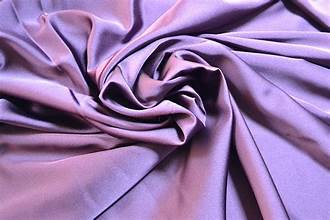
araceli silk or acetat Silk has been a symbol of luxury, beauty and sophistication for centuries. It originated in ancient China and has maintained its reputation as one of the most popular fabrics worldwide. However, advances in fiber science and the demand for affordable yet stylish alternatives have led to the emergence of fibers such as acetate silk. A synthetic fiber, acetate offers a similar look and feel to silk, making it an affordable and practical alternative. In this article, we explore the history, properties and uses of acetate silk, compare it to traditional silk, and explain why acetate silk is becoming popular in the fashion and textile industries. araceli silk or acetat
What is acetate?
Acetate is a semi-synthetic fiber made from cellulose, which is primarily obtained from wood pulp. It was first developed in the early 20th century as part of the broader evolution of synthetic fibers. The fiber is created through a process of treating cellulose with acetic acid and acetic anhydride. This chemical process produces cellulose acetate, a flexible and versatile material that can be spun into filaments used to make fibers. araceli silk or acetat
Although acetate is a synthetic product, it is often classified as a “semi-synthetic” fabric because it is derived from a natural resource, plant cellulose. It is different from fully synthetic fibers such as polyester and nylon, which are derived from petroleum products. araceli silk or acetat
Acetate silk: the birth of a new fabric
Acetate silk is a fabric made from acetate fibers, designed to mimic the luster, softness, and drape of natural silk. The development of acetate silk was the result of the fashion industry’s desire for an affordable fabric that could replicate the luxurious feel of silk without the high production costs. Natural silk is labor-intensive and expensive to produce due to the long process of harvesting the silkworm cocoons and spinning them into yarn, but acetate silk offers a more cost-effective and scalable solution. araceli silk or acetat
Acetate silk gained popularity in the early 1920s and 1930s, a time when many innovations were being introduced in synthetic fibers. The fabric was an attractive alternative to silk for everyday wear, and was often used for evening dresses, lingerie, and linings. Its soft texture and elegant drape make it particularly suitable for haute couture and formal wear.
Properties of Acetate Silk
Acetate silk has several unique qualities that make it a desirable fabric for both fashion and home textiles. araceli silk or acetat These properties have led to its widespread use in a variety of industries.
Shiny and Luster: One of the most notable features of acetate silk is its natural shine. Like real silk, acetate silk has a shiny surface that reflects light beautifully, giving garments made from this material an elegant and sophisticated look. Acetate’s sheen is so similar to silk that many people have trouble easily distinguishing between the two.
Soft Texture: Acetate silk has a soft, luxurious texture that gives it a delicate feel against the skin. This makes it ideal for lingerie, blouses, and dresses where comfort and softness are important. Acetate silk is also often used as a lining for clothing and bags, as the softness of the fiber allows it to slide easily over other materials araceli silk or acetat .
Drapability: Like traditional silk, acetate silk drapes beautifully, making it ideal for creating loose, elegant garments. Designers prize its ability to adapt gracefully to both structured evening dresses and loose, bohemian-style dresses.
Lightweight: Acetate silk is a lightweight fabric that enhances the appeal of garments designed for warm weather and layering. Its airy texture makes it comfortable to wear while still looking sophisticated.
Affordable: One of the main advantages of acetate silk is its affordability compared to natural silk. Acetate is less expensive to produce than synthetic fibers, making it an economical choice for both consumers and designers. It is affordable and suitable for everyday fashion and mass production. araceli silk or acetat
Acetate Silk vs. Natural Silk
Although acetate silk has many advantages, especially in terms of cost and availability, there are some differences araceli silk or acetat between acetate silk and natural silk that may affect a buyer’s decision.
Durability: Natural silk is valued for its strength and durability. It is one of the strongest natural fibers and has very good abrasion and tear resistance. Acetate silk, on the other hand, is more delicate. The fibers are prone to shrinkage and are more susceptible to damage from heat and moisture. Silk acetate garments are easily damaged during washing and ironing, so it is important to handle them with care.
Care instructions: Natural silk is delicate but can be hand washed or dry cleaned depending on the finish. Acetate silk, however, is more sensitive to water and solvents. Exposure to moisture can weaken or discolor the fibers, so dry cleaning is usually required araceli silk or acetat .
Environmental impact: Silk is an environmentally friendly fabric because it is obtained from silkworm cocoons, a renewable natural resource. However, even though acetate is semi-synthetic, the chemical processes involved in its production create a more significant environmental burden. Acetate production contains chemicals such as acetone, which can cause pollution if not handled responsibly.
Moisture absorption: One of the disadvantages of acetate silk compared to natural silk is its ability to absorb moisture. Natural silk is breathable, hygroscopic, and comfortable to wear in any climate. Acetate silk, on the other hand, has low moisture absorption and does not absorb sweat effectively, which can cause discomfort in humid environments. araceli silk or acetat
Hypoallergenic properties: Silk is naturally hypoallergenic, making it a good choice for those with sensitive skin or allergies. Although acetate silk is soft and smooth, it does not have the natural hypoallergenic properties of silk, and some people may find it unsuitable for direct contact with the skin.
Uses of Acetate Silk Acetate silk is used in a variety of products, especially in fashion and interior design. Its versatility, aesthetic appeal, and affordability make it a popular choice for several key uses araceli silk or acetat .
Clothing: Acetate silk is often used in women’s clothing, especially nightwear, blouses, skirts, and lingerie. Its ability to mimic the luxurious look and feel of silk makes it popular for creating affordable yet elegant garments. Designers often use acetate silk in special occasion dresses and suits, as its lustrous appearance adds a sophisticated touch to any outfit.
Linings: Acetate silk is often used as a lining material for jackets, coats, skirts, and bags due to its soft texture. It provides a smooth surface that allows the outer fabric to move smoothly, improving the overall comfort and functionality of the garment. araceli silk or acetat
Interior Design: Acetate silk is used in home textiles such as curtains, upholstery, and cushions, where its aesthetic appeal and ability to drape snugly around the waist are desirable qualities. Its luxurious appearance can enhance the look of your home’s interiors without the need for expensive natural silk fabrics araceli silk or acetat.
Accessories: Apart from clothing, acetate silk is also used in accessories such as scarves, ties, and hairbands, where its shine and softness enhance the look and feel of the product.
Conclusion
Acetate silk is an attractive alternative to natural silk, combining beauty, functionality and affordability. While it may not match the durability or environmental benefits of traditional silk, it offers a silk-like feel and look that appeals to fashion designers and consumers alike. Whether in clothing, interior design or accessories, acetate silk plays a vital role in the modern textile industry, providing a practical solution for those seeking elegance without spending a fortune. Its continued popularity underscores its importance in the worlds of fashion and design, where beauty and accessibility go hand in hand.
Fashion
Glamorpump1969: A retro revolution in fashion and glamourpump1969
Published
6 months agoon
September 10, 2024By
ahmad khan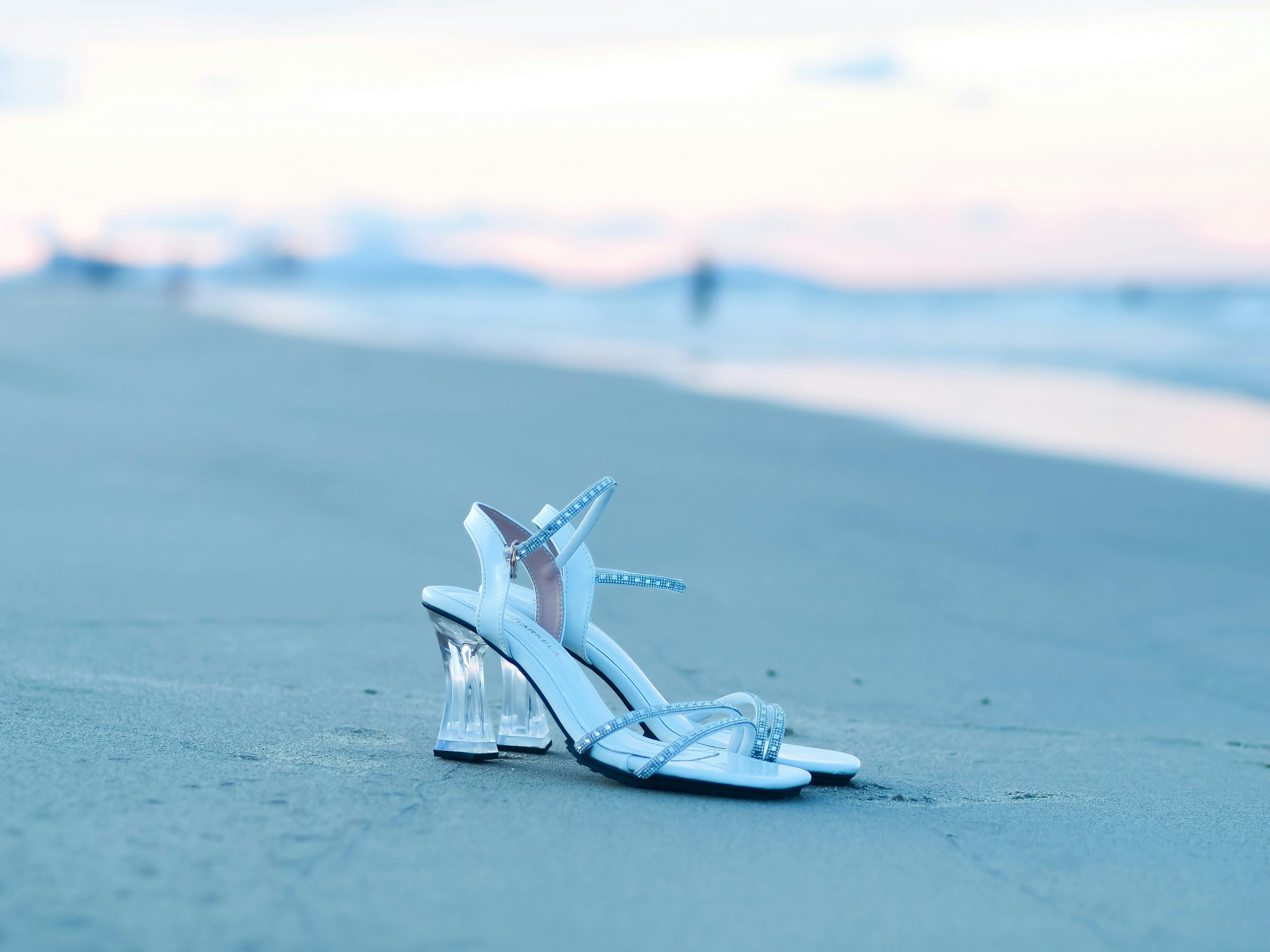
glamourpump1969 In the ever-evolving world of fashion, trends from different eras periodically come back into style, but few concepts capture the core of vintage charm as effectively as Glamorpump1969. Paying homage to the vibrancy of the 60s, the retro-futurism of high fashion, and the strong femininity of the decade, Glamorpump1969 channels the iconic style of 1969 while expressing the modern beauty, confidence, and individuality of a fashion movement that embodies glamourpump1969
Glamourpump1969 is more than just a brand. It is an aesthetic and lifestyle movement that ushers people into an era of liberation, creativity, and bold expression. It combines the timeless appeal of high heels (or “shoes”), which became a symbol of femininity in the mid-20th century, with the chic elegance of the late 1960s. This movement appeals not only to vintage fashion lovers, but also to anyone who wants to make a statement about identity, empowerment, and self-expression in today’s world.
The Year That Shaped a Generation: 1969
Before we delve deeper into what Glamourpump1969 represents, it’s crucial to understand the cultural context of 1969. It was an important year that left an indelible mark on history in many ways: music, politics, fashion, social movements, and more.
In fashion, the late 1960s were a time of innovation and rebellion. Designers like Yves Saint Laurent, Marie Quant, and André Courrèges were pushing the boundaries of what clothing could represent. The miniskirt became a symbol of youthful rebellion and space-age designs inspired by the optimism of the space race became popular.glamourpump1969
Women in 1969 embodied the spirit of liberation. As the feminist movement gained momentum, women sought to challenge traditional roles and express their individuality through both words and clothing. High heels, and pumps in particular, have become a symbol of female empowerment, straddling traditional notions of femininity and a new wave of women forging their own identities in a rapidly changing world.
The Appeal of Pumps: A Feminist Statement
At the heart of Glamourpump1969 is the quintessential pump. Pumps are a type of shoe that has historically symbolized both elegance and power. Pumps have evolved over the decades from a practical shoe to a high fashion staple. By the late 1960s, high heels were no longer just for formal events, but had become an everyday fashion item worn by women to express their style, whether at work or in a nightclub.
For women of the time, high heels were more than just shoes; they were a statement of identity. As more women entered the workforce, they began to develop a professional aesthetic that combined traditional femininity with a new independence. Sleek high heels created a powerful visual statement, embodying the balance between strength and elegance.
Glamorpump1969 revives this cultural icon for a new generation. While heels are often criticized for being uncomfortable or restrictive, high heels have also been celebrated as a way for women to own their femininity and express themselves with confidence. The movement behind Glamourpump1969 re-evaluates heels as a tool of empowerment, reminding women that fashion can be a form of self-expression and liberation.
Glamourpump1969 Fashion Aesthetics
From a fashion perspective, Glamourpump1969 combines the modern geometric style of the 1960s with the more psychedelic and free-spirited styles that emerged later in the decade. This era, where tailored lines and bold, expressive colors collided to create an unforgettable aesthetic that still influences modern fashion.
Color Palettes and Patterns: Bright primary colors like red, yellow, and blue were at the heart of the Mod fashion movement of the early 1960s, but later in the decade more psychedelic patterns and earth tones emerged. Glamorpump1969 reinterprets these color palettes for the modern era, focusing on geometric prints, monochromatic ensembles, and bold contrasts.
Miniskirts and Shift Dresses: One of the most iconic silhouettes of 1969 was the miniskirt or shift dress. Both emphasized the youthful and free spirit of the era. Glamorpump1969 takes this style and pairs it with statement heels that elongate your legs and add a chic touch. The overall effect will be fun and sophisticated, combining past trends with contemporary touches.
Accessories: No look is complete without the right accessories. At Glamourpump1969, every detail has been thought of. Statement, oversized sunglasses, bold jewelry, and colorful tights are essential to achieving the perfect retro look. In keeping with the vintage theme, these accessories are often inspired by the fun and experimental nature of 60s fashion, but with a modern twist, they are still relevant today.
Footwear: The heart and soul of Glamorpump1969 is in our footwear, especially our iconic heels. Whether classic stilettos or block heels, heels represent both the vintage glamour of 1969 and a modern reinvention of what it means to walk with confidence. Glamourpump1969 heels come in a variety of styles, from patent leather to suede, from bold prints to sleek minimalist designs. All heels are created to combine comfort and style, giving you a glamorous yet understated vibe.
Glamorpump1969 Cultural Influence
Glamorpump1969 goes beyond fashion and taps into cultural narratives of empowerment and individualism. This movement emphasizes that style is a reflection of a person’s inner strength and confidence. In an age where social media often sets unrealistic beauty standards, Glamorpump1969 is breaking those molds by encouraging women to embrace their uniqueness and celebrate their unique charms that I’m about to try.
At the core of this movement is the idea that femininity and power are not mutually exclusive. Historically a symbol of traditional femininity as well as a sign of independence, heels perfectly embody this philosophy. By embracing 1969 fashion, Glamorpump1969 reminds women of the pioneering spirit of that era, when women took on new roles in society and redefined what it meant to be strong and feminine.
A modern interpretation of retro charm.
Glamorpump1969 is rooted in nostalgia, but also in forward thinking. Today’s women are rewriting the rules of what it means to be glamorous and Glamorpump1969 is evolving with them. The brand/movement represents a fusion of past and present, honoring its 1969 heritage while also offering a range of products and experiences that appeal to modern sensibilities.
Sustainable Fashion: With an increasing awareness of environmental issues, Glamorpump1969 is committed to sustainability. Many of its products are made from eco-friendly materials and the brand promotes slow fashion, encouraging consumers to invest in timeless, high-quality pieces that go beyond seasonal trends.
Inclusivity: Fashion has traditionally been an exclusive industry, but Glamorpump1969 aims to break down these barriers by offering inclusive sizing and styles for all body types. The brand promotes body positivity and strives to help all women feel beautiful in their own skin.
Empowerment Through Expression: Beyond aesthetics, Glamorpump1969 offers workshops and events focused on self-expression, confidence-building, and empowerment. These events, both virtual and in-person, create a community where people can come together to celebrate their unique styles and learn from each other.
Bottom Line: Glamorpump1969 as a Movement
Glamourpump1969 is more than just a brand or a fashion trend. It’s a movement that celebrates femininity, individuality, and the power of self-expression.
Trending
-

 Blog11 months ago
Blog11 months agoExploring the Wonders of myfavouriteplaces.org:// Blog
-

 Fashion11 months ago
Fashion11 months agoDiscovering the Enigmatic World of λιβαισ
-

 News11 months ago
News11 months ago专业良家收割机: Revolutionizing Home Harvesting
-
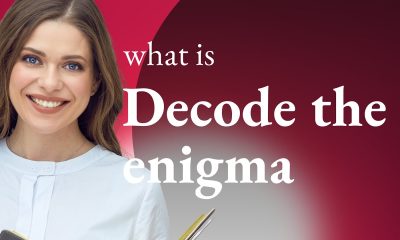
 Blog11 months ago
Blog11 months agoUnveiling the Magic: Decoding the Enigma of 2819294213
-

 Entertainment11 months ago
Entertainment11 months agoGeekzilla Radio: Where Geekery Meets the Airwaves
-
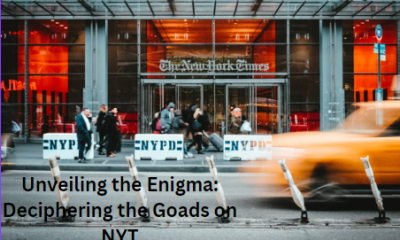
 News11 months ago
News11 months agoUnveiling the Enigma: Deciphering the Goads on NYT
-

 Tech11 months ago
Tech11 months agoUnveiling the Magic of hannahoetzel2: A Journey into Digital Artistry
-

 Tech11 months ago
Tech11 months agoDecoding the Enigma: Exploring the World of ahr0chm6ly9wcm9ka2v5cy5uzxqvexv6ds1wcm9klwtlexmv
